Intelligent Price Modulation:
Machine Learning for Market Responsiveness
Table Of Contents
Introduction
Key Improvements
Conclusion
Advanced Dynamic Pricing Solution
Introduction:
Dynamic pricing has emerged as a critical strategy in modern business operations, leveraging advanced machine learning and artificial intelligence techniques to optimize pricing decisions in real-time. While traditional pricing models rely primarily on historical data and basic demand elasticity calculations, contemporary market dynamics demand a more sophisticated approach that can adapt to rapidly changing conditions, competitor behaviors, and individual customer preferences. This paper presents an enhanced dynamic pricing framework that builds upon existing methodologies by incorporating multi-factor demand forecasting, reinforcement learning, real-time competitor analysis, and advanced causal inference techniques.
The proposed solution addresses several key limitations in current dynamic pricing systems, including the inability to effectively capture complex market interactions, limited personalization capabilities, and insufficient adaptation to real-time market changes. By integrating multiple advanced techniques, including Deep Q-Networks (DQN) for reinforcement learning and Double Machine Learning for causal inference, this framework provides a more robust and comprehensive approach to dynamic pricing. The solution also emphasizes the importance of operational considerations through robust deployment practices and continuous monitoring systems.
Key Improvements:
1. Multi-factor demand forecasting
2. Reinforcement learning for price optimization
3. Real-time competitor price monitoring
4. Customer segmentation and personalized pricing
5. Advanced causal inference techniques
6. Robust model deployment and monitoring
1. Multi-factor Demand Forecasting:
Instead of relying solely on historical sales data and price elasticity, we’ll implement a more comprehensive demand forecasting model that considers multiple factors:
- Historical sales data
- Price elasticity (using causal inference techniques)
- Seasonality and trends
- External factors (e.g., weather, events, economic indicators)
- Marketing activities and promotions
- Product lifecycle stage
We’ll use a combination of Prophet (for handling seasonality and trends) and LightGBM (for incorporating additional features) in an ensemble approach:
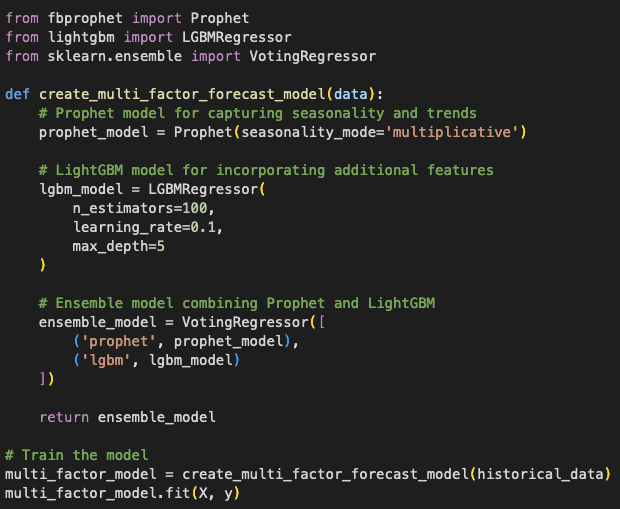
2. Reinforcement Learning for Price Optimization:
To dynamically adjust prices based on market conditions and maximize long-term revenue, we’ll implement a reinforcement learning (RL) approach using the Deep Q-Network (DQN) algorithm:
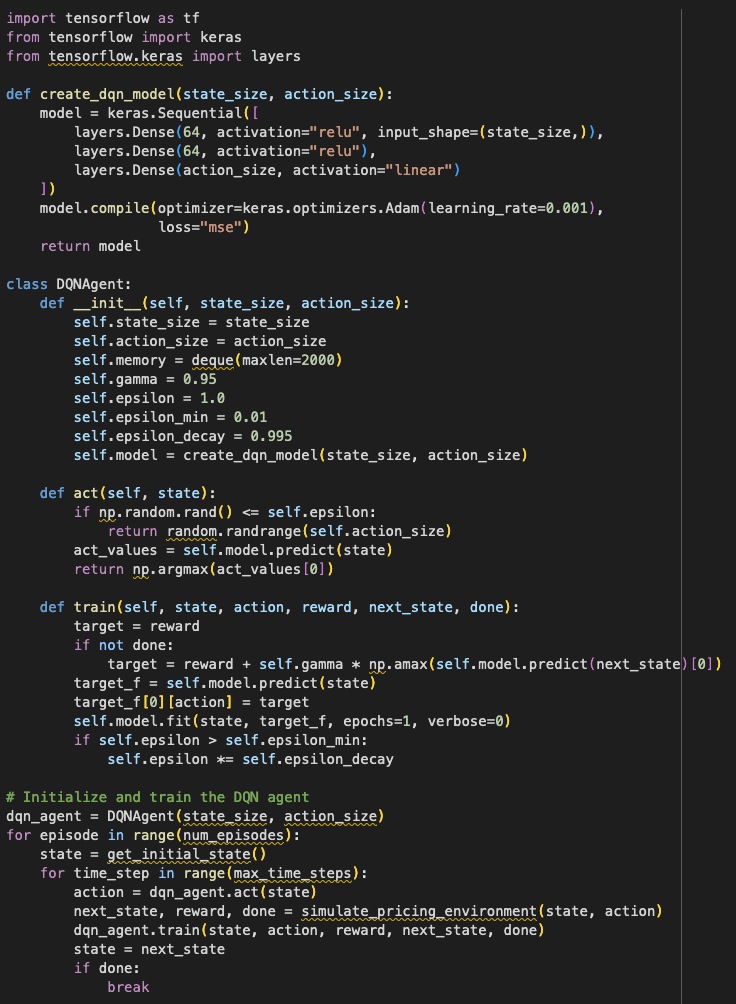
3. Real-time Competitor Price Monitoring:
Implement a system to continuously monitor competitor prices and adjust our pricing strategy accordingly:
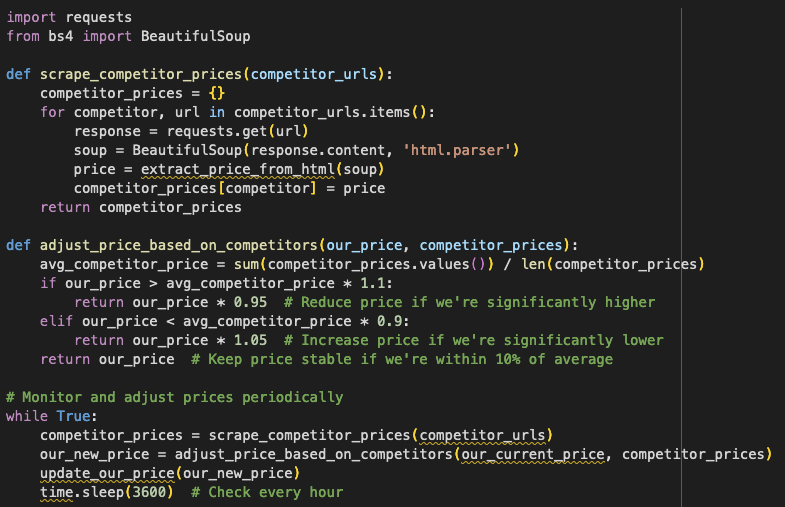
4. Customer Segmentation and Personalized Pricing
Implement customer segmentation to offer personalized pricing based on customer attributes and behaviors:
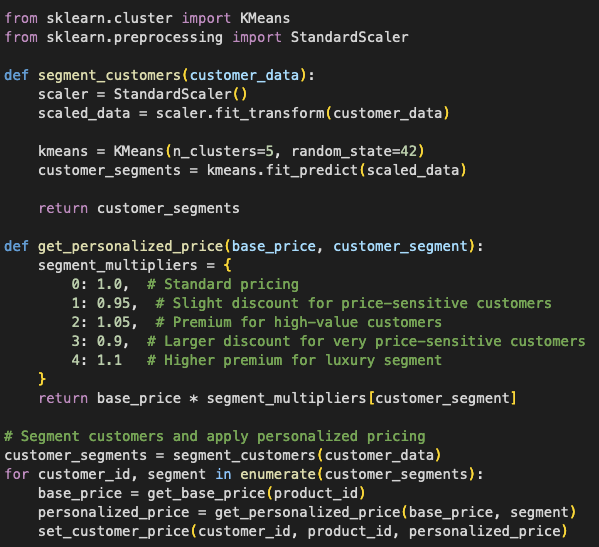
5. Advanced Causal Inference Techniques:
Enhance the causal inference approach using more advanced techniques such as Causal Forests and Double Machine Learning:
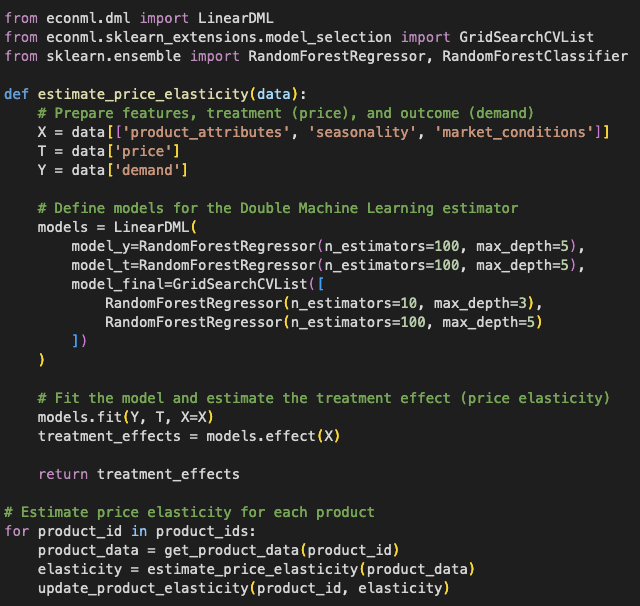
6. Robust Model Deployment and Monitoring:
Implement a robust deployment pipeline and monitoring system to ensure the dynamic pricing model performs well in production:

Conclusion:
The advanced dynamic pricing solution presented in this paper demonstrates the potential for combining multiple sophisticated techniques into a cohesive, adaptive pricing system. By integrating multi-factor demand forecasting, reinforcement learning, real-time competitor monitoring, customer segmentation, and advanced causal inference, the framework provides a comprehensive approach to addressing the complexities of modern pricing challenges.
The implementation of this system requires careful consideration of various technical and operational aspects, from data pipeline setup to model deployment and monitoring. The success of such a system depends not only on the mathematical and algorithmic sophistication of its components but also on the robustness of its implementation and the quality of its monitoring systems.
Future research directions could explore the integration of additional data sources, the development of more sophisticated reinforcement learning algorithms specifically tailored to pricing problems, and the investigation of novel approaches to customer segmentation and personalization. As market dynamics continue to evolve and computational capabilities advance, the framework can be extended and refined to address emerging challenges in dynamic pricing optimization.
Meet Our Lead Instructors
Lorem ipsum dolor sit amet, consectetur adipiscing elit. Duis ac eros ut dui bibendum ultricies. Maecenas egestas fringilla semper.




Number Speaks
10+
Awards
5+
Countries
12+
Partners
7K+
Students
What Our Students Have to Say




